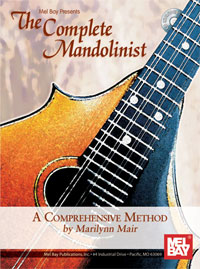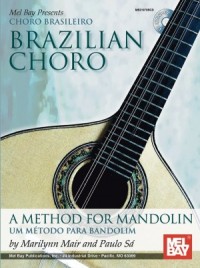 Well I was going to wait longer to write, but the pictures & experiences — they pile up! So much is happening, musically, travel-wise, but in a slow organic relaxed way. My I Ching reading before I left for Brazil was Trigram 2 — “The Receptive”. Indicating, briefly, that I can’t make things happen, but if I take care of practical matters and wait, they will. It’s unusual for me not to be in charge. My friend Mitch says I’m an actualizer — I make things happen. Here in Rio my role is different. I need to be brave, to dare, to put myself into places I want to be, and then I need to wait and not doubt the value of doing so. I’ve been here a month now — arrived Feb. 27th — and so far that process has paid off in spades.
Well I was going to wait longer to write, but the pictures & experiences — they pile up! So much is happening, musically, travel-wise, but in a slow organic relaxed way. My I Ching reading before I left for Brazil was Trigram 2 — “The Receptive”. Indicating, briefly, that I can’t make things happen, but if I take care of practical matters and wait, they will. It’s unusual for me not to be in charge. My friend Mitch says I’m an actualizer — I make things happen. Here in Rio my role is different. I need to be brave, to dare, to put myself into places I want to be, and then I need to wait and not doubt the value of doing so. I’ve been here a month now — arrived Feb. 27th — and so far that process has paid off in spades.
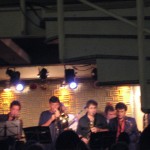 I ended Log 2 with the session at Espirito do Chopp. There were lots of just regular things to do the next couple of days and Tuesday night I went to Modern Sound with my landlord, Roberto, his friend Sueli, who plays sax, and her b’friend, and we met a couple of other friends of theirs there. We went to see their friend Idriss Boudrioua — a stunning sax player who is French but has lived in Rio for 30 years — play with his band. The scene at Modern Sound is very cool. By day it’s a fabulous CD store, but at night they cover the racks of CDs with fitted wooden tops, put stools around them, and voila! — a bar with some food too, and music nearly every night.
I ended Log 2 with the session at Espirito do Chopp. There were lots of just regular things to do the next couple of days and Tuesday night I went to Modern Sound with my landlord, Roberto, his friend Sueli, who plays sax, and her b’friend, and we met a couple of other friends of theirs there. We went to see their friend Idriss Boudrioua — a stunning sax player who is French but has lived in Rio for 30 years — play with his band. The scene at Modern Sound is very cool. By day it’s a fabulous CD store, but at night they cover the racks of CDs with fitted wooden tops, put stools around them, and voila! — a bar with some food too, and music nearly every night.
 Apparently there’s choro 5-9 on Wednesdays — last week bandolimist Rodrigo Lessa played it with a band — but my lessons with Joel continue to take up nearly all of Wednesday so I haven’t made it there for that yet. Idriss was amazing, and unexpectedly very NYC — not a Brazilian rhythm to be heard. Afterwards Sueli introduced me to the sound tech guy, Paulo, who is also a cab driver by day, and is now my personal driver of choice. Nice guy, speaks some English, recorded an LP by Joel a couple of decades ago, plays sax & flute. He stopped the cab and walked me to the door at Bar do Tom on Sunday & introduced me to the doorman as “minha amiga” And he definitely went a more direct way to Joel’s than my earlier anonymous driver. But I digress.
Apparently there’s choro 5-9 on Wednesdays — last week bandolimist Rodrigo Lessa played it with a band — but my lessons with Joel continue to take up nearly all of Wednesday so I haven’t made it there for that yet. Idriss was amazing, and unexpectedly very NYC — not a Brazilian rhythm to be heard. Afterwards Sueli introduced me to the sound tech guy, Paulo, who is also a cab driver by day, and is now my personal driver of choice. Nice guy, speaks some English, recorded an LP by Joel a couple of decades ago, plays sax & flute. He stopped the cab and walked me to the door at Bar do Tom on Sunday & introduced me to the doorman as “minha amiga” And he definitely went a more direct way to Joel’s than my earlier anonymous driver. But I digress.
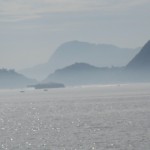 Wednesday was my 2nd lesson with Joel. I took my computer to copy some of his out-of-print CDs and a live concert recording with Luiz Otavio Braga (yes, music fans, I will share). As before, it was both wonderful and frustrating. I don’t know if it’s his hearing (he is deaf in one ear) or my inability to understand what he wants me to do, but I will play what I think he wants over and over and receive a string of “Nao, nao, nao, sim!, nao, nao). However he clearly likes me — his wife too, she makes me feel like a niece or somehow part of the family.
Wednesday was my 2nd lesson with Joel. I took my computer to copy some of his out-of-print CDs and a live concert recording with Luiz Otavio Braga (yes, music fans, I will share). As before, it was both wonderful and frustrating. I don’t know if it’s his hearing (he is deaf in one ear) or my inability to understand what he wants me to do, but I will play what I think he wants over and over and receive a string of “Nao, nao, nao, sim!, nao, nao). However he clearly likes me — his wife too, she makes me feel like a niece or somehow part of the family.
He spent 6 hours with me this time. He said that I don’t need to pay for the lessons if I can’t — I told him firmly that I can and that I want to. He worries over the cost of the cab, bemoans the fact that I only have 3 months, plays music for me — personally and recordings, and is unbelievably generous with his time — my hour lessons lasting 7 and 6 hours respectively. He was delighted to see the 1-song movie I had taken of him last week that I played for him on my computer (he hadn’t been able to hear it on my camera the week before), and I think is beginning to understand what I am trying to do here. As exhausting as it is — everything is in Portuguese too — there is something unbelievably cosmic about being in the presence of this man, as if I am somehow actually absorbing by osmosis the very soul of choro. It’s truly unbelievable, and I feel very lucky to be able to do this.
Paulo was my taximan to and fro (he’ll have to be TaxiPaulo from now on to keep from getting mixed up with Paulo Sa — my bandolimist pal), and, when I said I liked Idriss’ playing in the cab on the way to Joel’s, he offered to pick me up a copy of his new CD that I could pay for on the return trip. I got home at 8:30 — too late to go hear Rodrigo Lessa, but too wound up to sleep so I was up late.
 I woke to the phone the next morning at 8:15. It’s Henrique — his orchestra rehearsal has been cancelled because the air-conditioning in the hall has broken, and he is in town (he lives in Petropolis, like Paulo Sa, an hour away in the mountains) so do I want to go explore Niteroi? Of course! He picks me up at 9:00, and is talking to Marcus — guitarist in the Rio Trio — when I meet him out front. Marcus is working on his doctorate in composition & is teaching a lot so I haven’t seen him at all even though he lives in Urca. We will remedy that “ate breve”.
I woke to the phone the next morning at 8:15. It’s Henrique — his orchestra rehearsal has been cancelled because the air-conditioning in the hall has broken, and he is in town (he lives in Petropolis, like Paulo Sa, an hour away in the mountains) so do I want to go explore Niteroi? Of course! He picks me up at 9:00, and is talking to Marcus — guitarist in the Rio Trio — when I meet him out front. Marcus is working on his doctorate in composition & is teaching a lot so I haven’t seen him at all even though he lives in Urca. We will remedy that “ate breve”.
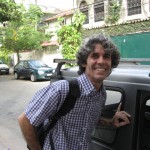 Henrique & I drive north and over the 14-kilometer bridge to Niterói. We go first to the offices of the Orquestra Sinfnica Nacional, and they give me CDs and DVDs of the group. We visit the un-air-conditioned hall, see the ergonomically-correct chairs that Henrique has designed for musicians and the orchestra is trying to get money to have made, and then walk to the Museum of Contemporary Art, designed by Oscar Niemeyer, the controversial architect who also designed the modernistic capitol of Brasilia. It’s an amazing spaceship-like edifice with really very little space for art inside, but incredibly photogenic.
Henrique & I drive north and over the 14-kilometer bridge to Niterói. We go first to the offices of the Orquestra Sinfnica Nacional, and they give me CDs and DVDs of the group. We visit the un-air-conditioned hall, see the ergonomically-correct chairs that Henrique has designed for musicians and the orchestra is trying to get money to have made, and then walk to the Museum of Contemporary Art, designed by Oscar Niemeyer, the controversial architect who also designed the modernistic capitol of Brasilia. It’s an amazing spaceship-like edifice with really very little space for art inside, but incredibly photogenic.
We  then drive along the coast to a little fishing village and then up to the Fortaleza da Santa Cruz, built in 1765, that guards the mouth of the harbor across the bay from the fort near Urca at Praia Vermelha. We had to wait for a tour guide, but I am really glad we did. The light and the architecture were incredible — something out of a surrealist painting by Giorgi Câ�¦ Afterwards we have lunch in a little fishing village and arrive back in Urca 8 hours after we began.
then drive along the coast to a little fishing village and then up to the Fortaleza da Santa Cruz, built in 1765, that guards the mouth of the harbor across the bay from the fort near Urca at Praia Vermelha. We had to wait for a tour guide, but I am really glad we did. The light and the architecture were incredible — something out of a surrealist painting by Giorgi Câ�¦ Afterwards we have lunch in a little fishing village and arrive back in Urca 8 hours after we began. 
That evening Roberto shows me the wonders of an avocado milkshake — an avocado, a lime, milk, and sugar in a blender — delicious!
 Saturday is Choro School again, and brings definite lessons in the value of being patient and waiting. I arrive with music stand and music, ready to go, and immediately run into Fernando Duarte — my email friend who runs the bandolim.com.br website. He says I have to look at the posted sheet to find out my level & he was level 2. I elbow my way up to the front, along with everyone else and see that I am also level 2 (out of 3) & am also signed up for the Repertorio 1 class, meeting at 9:00.
Saturday is Choro School again, and brings definite lessons in the value of being patient and waiting. I arrive with music stand and music, ready to go, and immediately run into Fernando Duarte — my email friend who runs the bandolim.com.br website. He says I have to look at the posted sheet to find out my level & he was level 2. I elbow my way up to the front, along with everyone else and see that I am also level 2 (out of 3) & am also signed up for the Repertorio 1 class, meeting at 9:00.
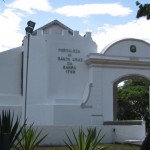 I arrive to find class already started; they’re learning “Odeon” by ear — melody & chords. The class is 3 flutes & me for melody, 3 cavaquinhos, 3 guitars, and a bass, and the teacher — a woman guitarist I don’t know — is teaching the melody of the A section. We’ve barely started the B section when class is over. My 10:00 class is Bandolim 2, withPedro Amorim. The class — we’re 9 or 10 — is many different levels he says, and we are going to learn together. We play a finger exercise similar to ones I’ve been doing with Joel and then play Olaria — the assigned piece, by Mauricio Carrilho — and work on playing a gliss, again, like at Joel’s. And we work on the chords.
I arrive to find class already started; they’re learning “Odeon” by ear — melody & chords. The class is 3 flutes & me for melody, 3 cavaquinhos, 3 guitars, and a bass, and the teacher — a woman guitarist I don’t know — is teaching the melody of the A section. We’ve barely started the B section when class is over. My 10:00 class is Bandolim 2, withPedro Amorim. The class — we’re 9 or 10 — is many different levels he says, and we are going to learn together. We play a finger exercise similar to ones I’ve been doing with Joel and then play Olaria — the assigned piece, by Mauricio Carrilho — and work on playing a gliss, again, like at Joel’s. And we work on the chords.
My Portuguese has definitely improved and I can understand almost everything he says. As the 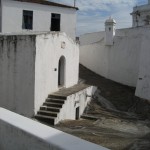 class ends, I ask Pedro if I can stay on to observe & record Bandolim 3, as I have nothing scheduled at 11:00. He agrees, so I pack up my stuff and sit off to the side. Level 3 is 6 mando-hot-shot boys, and a girl and 2 other guys who seem to know fewer choro by heart. They start off playing scales, and Pedro tells me to take out my instrument and play too. Then they play a choro I recognize but don’t know — Diabinho Maluco by Jacob I find out later — first melody, then chords. He has a pair who know it play the whole thing, alternating sections of melody and chords, and talks to them about their interpretations. And others play what they know — just melody, just the A section, or nothing. Then we play Olaria. This level is playing with some glisses that I mimic. It’s really interesting to be in both levels of class — I thank Pedro as I leave.
class ends, I ask Pedro if I can stay on to observe & record Bandolim 3, as I have nothing scheduled at 11:00. He agrees, so I pack up my stuff and sit off to the side. Level 3 is 6 mando-hot-shot boys, and a girl and 2 other guys who seem to know fewer choro by heart. They start off playing scales, and Pedro tells me to take out my instrument and play too. Then they play a choro I recognize but don’t know — Diabinho Maluco by Jacob I find out later — first melody, then chords. He has a pair who know it play the whole thing, alternating sections of melody and chords, and talks to them about their interpretations. And others play what they know — just melody, just the A section, or nothing. Then we play Olaria. This level is playing with some glisses that I mimic. It’s really interesting to be in both levels of class — I thank Pedro as I leave.
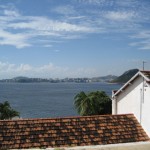 Then it’s Bandao — everyone playing outdoors again, like last week. I find Marcilio Lopes — Paulo’s friend who plays bandolim in Agua de Moringa — introduce myself and we talk a bit. He’s teaching harmonia (chords & voicings, I think) here. I give him my contact info & he says he’ll email me about sessions. He also agrees that, unfortunately, I shouldn’t go to Lapa alone. Interestingly Fernando, later, doesn’t. Although he does say that last week he & a friend were waiting for a bus there while someone was smashing a car window & stealing a stereo a few feet away. I also see Edgar — a friend of Roberto’s that I met at Idriss’ concert — who is there playing clarinet. The group-of-the-whole plays both tunes we’ve been given, and also a couple of choro — Sonoroso, that I’m working on with Joel, is one. I talk to one of the bando hot-shots who wants to know if I know Mike Marshall, clearly a hero of his. He can’t read — most of them seem to not-read to some degree — so plays along with me, picking up the A section of the tune by ear.
Then it’s Bandao — everyone playing outdoors again, like last week. I find Marcilio Lopes — Paulo’s friend who plays bandolim in Agua de Moringa — introduce myself and we talk a bit. He’s teaching harmonia (chords & voicings, I think) here. I give him my contact info & he says he’ll email me about sessions. He also agrees that, unfortunately, I shouldn’t go to Lapa alone. Interestingly Fernando, later, doesn’t. Although he does say that last week he & a friend were waiting for a bus there while someone was smashing a car window & stealing a stereo a few feet away. I also see Edgar — a friend of Roberto’s that I met at Idriss’ concert — who is there playing clarinet. The group-of-the-whole plays both tunes we’ve been given, and also a couple of choro — Sonoroso, that I’m working on with Joel, is one. I talk to one of the bando hot-shots who wants to know if I know Mike Marshall, clearly a hero of his. He can’t read — most of them seem to not-read to some degree — so plays along with me, picking up the A section of the tune by ear.
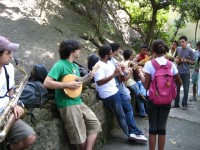 It’s announced we’re all to come back at 3:00, either to tryout for Camerata Carioca — the string group — or Fusiosa — the brass group — (these are the best players), or to form “regionals” — groups that will play together and be coached by faculty. Fernando doesn’t think he’ll get into a group because he is only coming every other week — they say every 15 days — as he has to fly in from Espirito Santo. But we’ll go and see. There’s a lunch break — I grab a snack and a Mate (ice tea) and hang out listening to a group play folk music & forro. Fernando comes out after lunch and we talk. The folk group starts playing choro and Fernando says — let’s play! So I play in my first roda & do about as well as everybody else. In the pic, Fernando is the one in the green shirt. [And a note from the future, 3 members of my soon-to-begin band are also in the jam–Romulo is on the left, and Rafael & Marquinho are on either side of the backpack girl. A portentious moment!]
It’s announced we’re all to come back at 3:00, either to tryout for Camerata Carioca — the string group — or Fusiosa — the brass group — (these are the best players), or to form “regionals” — groups that will play together and be coached by faculty. Fernando doesn’t think he’ll get into a group because he is only coming every other week — they say every 15 days — as he has to fly in from Espirito Santo. But we’ll go and see. There’s a lunch break — I grab a snack and a Mate (ice tea) and hang out listening to a group play folk music & forro. Fernando comes out after lunch and we talk. The folk group starts playing choro and Fernando says — let’s play! So I play in my first roda & do about as well as everybody else. In the pic, Fernando is the one in the green shirt. [And a note from the future, 3 members of my soon-to-begin band are also in the jam–Romulo is on the left, and Rafael & Marquinho are on either side of the backpack girl. A portentious moment!]
 Then it’s time for picking regionals & we go to the designated room where Luciana Rabello is sorting everyone out. Some groups are already formed, and some need only a couple of players. The rest of us can sign up on a sheet and wait to see if any group wants us, or try to form groups ourselves. It’s intended that these groups will be close to the traditional instrumentation — a 6-string & 7-string guitar, cavaquinho, pandeiro, and two soloists — and practice during the week as well, be a “comunidade,” as Luciana puts it. Fernando & his friend from home ask Luciana if they can be a group with just bandolim and cavaquinho, since they’ll only be there half time but can practice at home. And then they get a bass player who is also there only every other week, so Fernando is happy.
Then it’s time for picking regionals & we go to the designated room where Luciana Rabello is sorting everyone out. Some groups are already formed, and some need only a couple of players. The rest of us can sign up on a sheet and wait to see if any group wants us, or try to form groups ourselves. It’s intended that these groups will be close to the traditional instrumentation — a 6-string & 7-string guitar, cavaquinho, pandeiro, and two soloists — and practice during the week as well, be a “comunidade,” as Luciana puts it. Fernando & his friend from home ask Luciana if they can be a group with just bandolim and cavaquinho, since they’ll only be there half time but can practice at home. And then they get a bass player who is also there only every other week, so Fernando is happy.
I wait, wondering why, trying to remember that that is what I am supposed to do, but am finally going to leave because I realize that I won’t even be there for the final concert, but Fernando insists that I talk to Luciana. I explain my situation to her — in Portuguese!! — and she understands and says that maybe I can be a visitor in a group, and has me sign up on a sheet of bandolims who want groups. And as Fernando & his friend & I are leaving, the sax player from the jam session runs to catch up with us, and wants me to be in their band. He has been in Boston and speaks English & his name is Romulo, but all his Boston friends called him Holmes because they couldn’t pronounce it. They don’t care that I’ll have to leave early, they just want a bandolim. So suddenly I have a Brazilian band! And choro school has been 7 hours. Walk home and don’t do much else — cook dinner, make my first caipirinhas, read the new Rio Veja — Guinga is playing next week! — listen to Brazilian music on my Ipod.
 Sunday is market day again, and as I am on the way there Henrique calls and says he is coming into town for something and has to stay over for a rehearsal on Monday evening, and he’s brought some dissertations on Brazilian music that I may want to copy. And we can go see some more of Rio on Monday before his rehearsal if I’d like to. Excellent! Sunday night I go to see Epouca D’Oro, Jacob do Bandolim’s old band, at Bar do Tom, taking a cab with TaxiPaulo because it starts at 9:00, and I’ll definitely need to get a ride home. It’s a cool bar, and, interestingly, there are tables full of older ladies — many of them! Quite different from the hip young crowd at Modern Sound. And they all clearly know all of the tunes, sometimes singing along if it’s a choro with words. The bandolimist in the group is Bruno Rian, Deo’s son. They are a crack ensemble, and this is really a show — 1½ hours straight. I surreptitiously record it — notice a Japanese student nearby doing the same — and take a couple of pics and a movie, covering the screen so as not to bother anyone, so it ends up a bit wiggly.
Sunday is market day again, and as I am on the way there Henrique calls and says he is coming into town for something and has to stay over for a rehearsal on Monday evening, and he’s brought some dissertations on Brazilian music that I may want to copy. And we can go see some more of Rio on Monday before his rehearsal if I’d like to. Excellent! Sunday night I go to see Epouca D’Oro, Jacob do Bandolim’s old band, at Bar do Tom, taking a cab with TaxiPaulo because it starts at 9:00, and I’ll definitely need to get a ride home. It’s a cool bar, and, interestingly, there are tables full of older ladies — many of them! Quite different from the hip young crowd at Modern Sound. And they all clearly know all of the tunes, sometimes singing along if it’s a choro with words. The bandolimist in the group is Bruno Rian, Deo’s son. They are a crack ensemble, and this is really a show — 1½ hours straight. I surreptitiously record it — notice a Japanese student nearby doing the same — and take a couple of pics and a movie, covering the screen so as not to bother anyone, so it ends up a bit wiggly.
 Monday morning early Henrique arrives with a bag full of dissertations on Brazilian music that we take to UniRio to copy. Hundreds of pages in Portuguese — my, I am optimistic! We drive to Tijuca, past the Praia de Joao (from the choro “Serenata no Joao”) and into the Tijuca National Park — the largest urban rainforest in the world, and see many wonders, including the Tournay Waterfall. When Henrique hears that I haven’t yet been up the nearby Corcovado to see the Christo Redemptor, he says — vamos! So
Monday morning early Henrique arrives with a bag full of dissertations on Brazilian music that we take to UniRio to copy. Hundreds of pages in Portuguese — my, I am optimistic! We drive to Tijuca, past the Praia de Joao (from the choro “Serenata no Joao”) and into the Tijuca National Park — the largest urban rainforest in the world, and see many wonders, including the Tournay Waterfall. When Henrique hears that I haven’t yet been up the nearby Corcovado to see the Christo Redemptor, he says — vamos! So  we do. It’s cloudy, off and on, but very impressive views nonetheless. I can see Pao do Aucar and Urca far below. Then we drive down into the barrio of Santa Teresa to have lunch at his mother’s house. She has gone out, but has left lunch for us. It’s an interesting house perched on a hillside and very open to the jungle-like foliage outside. It’s in a safe area, but apparently St. Teresa is being encroached upon by nearby favelas and is becoming increasingly dangerous to live in. We charge up and down the steep hills in Henrique’s jeep as he shows me the neighborhood where he used to live. There are apartment buildings where one side is safe, and rents are high, and on the other side, facing a favela, bullets can and do go right in through the windows. Rents are lower on that side of the building.
we do. It’s cloudy, off and on, but very impressive views nonetheless. I can see Pao do Aucar and Urca far below. Then we drive down into the barrio of Santa Teresa to have lunch at his mother’s house. She has gone out, but has left lunch for us. It’s an interesting house perched on a hillside and very open to the jungle-like foliage outside. It’s in a safe area, but apparently St. Teresa is being encroached upon by nearby favelas and is becoming increasingly dangerous to live in. We charge up and down the steep hills in Henrique’s jeep as he shows me the neighborhood where he used to live. There are apartment buildings where one side is safe, and rents are high, and on the other side, facing a favela, bullets can and do go right in through the windows. Rents are lower on that side of the building.
 We go to the small Museu Chácara do C&eactue;u, right by his mother’s house, the house of a wealthy art connoisseur c. 1900, Raymundo Castro Maya, and peer into the Casa Ruina — a preserved, ruined house — next door. The last stop of the day is at the Cathedral in Glória- site of the choro “Na Glória,” apparently written for/about a wedding in that church. It’s under construction, but a helpful worker, hearing Henrique tell me the history, lets us inside to see some of it. Henrique has played many weddings there and says the acoustics are great. I have to add here that Henrique’s many stories are nearly the best part of our trips, something I can’t really document in writing. He is full of them, personal stories, history, philosophy, folklore — all interesting. A fun person to hang out with.
We go to the small Museu Chácara do C&eactue;u, right by his mother’s house, the house of a wealthy art connoisseur c. 1900, Raymundo Castro Maya, and peer into the Casa Ruina — a preserved, ruined house — next door. The last stop of the day is at the Cathedral in Glória- site of the choro “Na Glória,” apparently written for/about a wedding in that church. It’s under construction, but a helpful worker, hearing Henrique tell me the history, lets us inside to see some of it. Henrique has played many weddings there and says the acoustics are great. I have to add here that Henrique’s many stories are nearly the best part of our trips, something I can’t really document in writing. He is full of them, personal stories, history, philosophy, folklore — all interesting. A fun person to hang out with.
 I’m feeling a bit under the weather today, and so am taking it easy, writing and playing a bit. Paulo has called and is going to arrange a roda up in Petropolis this coming week-end so I can meet his family and friends. Guinga is playing with Toninho too, and Sueli’s all-girl sax quartet is playing in Lapa — I’ve got to try to fit them all in. I’m playing with Igor a week from Friday, I suddenly realize. And my boy Nate, who is now in Buenos Aires, arrives here a week from Thursday. So far I have been ending these logs with a sonnet written during the week, but I haven’t finished any lately — many ideas simply evaporating unwritten in the midst of something else. I do like the idea of adding the perspective of poetic observation, however, so here’s one written the day after the lunar eclipse, that I watched over the water in Urca at the beginning of March:
I’m feeling a bit under the weather today, and so am taking it easy, writing and playing a bit. Paulo has called and is going to arrange a roda up in Petropolis this coming week-end so I can meet his family and friends. Guinga is playing with Toninho too, and Sueli’s all-girl sax quartet is playing in Lapa — I’ve got to try to fit them all in. I’m playing with Igor a week from Friday, I suddenly realize. And my boy Nate, who is now in Buenos Aires, arrives here a week from Thursday. So far I have been ending these logs with a sonnet written during the week, but I haven’t finished any lately — many ideas simply evaporating unwritten in the midst of something else. I do like the idea of adding the perspective of poetic observation, however, so here’s one written the day after the lunar eclipse, that I watched over the water in Urca at the beginning of March:
something cracked the toxins are leaking out
I wonder if it’s like an oil change
and all the sludgy brain matter and strange
ideas will drain into a pit (I doubt
it) and I’ll be refilled with a sunny
disposition no longer the kind of
person who would doubt that happiness love
and contentment were created for me
I watch the full moon its light leaking fast
be eclipsed and reborn in a red glow
from nearly nothing and I want to know
when my fill-up is coming and if past
sins are atoned for so I now could dream
of life more beautiful than it would seem
 Hope y’all are enjoying the start of spring as Rio heads into fall. (A fall with temperatures in the 90’s!). I’ll check back in in April to let you know how month #2 is progressing.
Hope y’all are enjoying the start of spring as Rio heads into fall. (A fall with temperatures in the 90’s!). I’ll check back in in April to let you know how month #2 is progressing.


